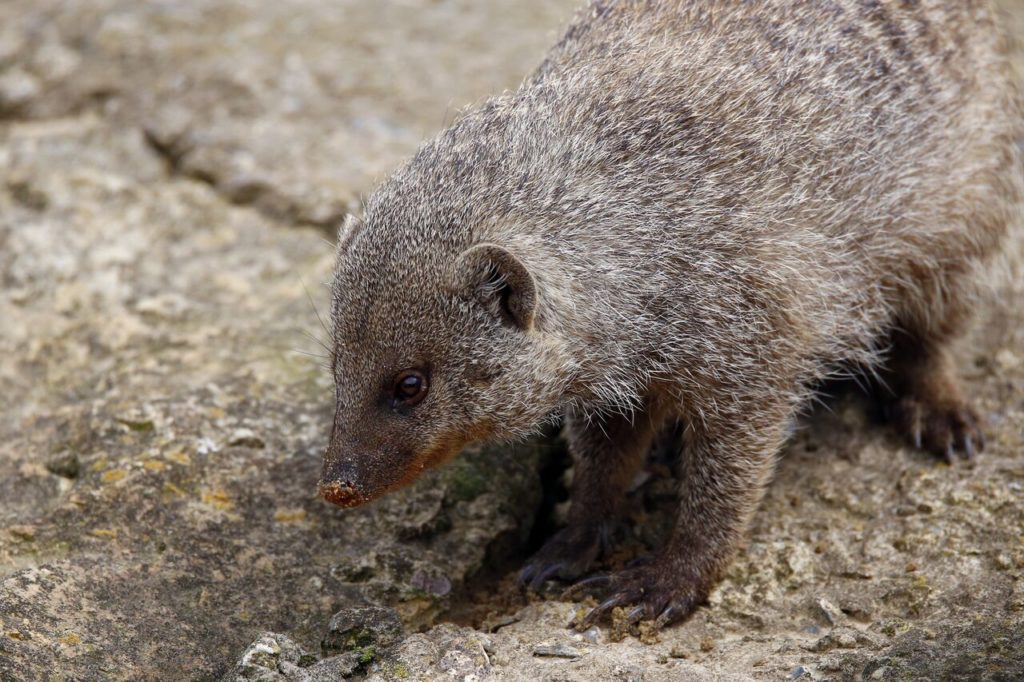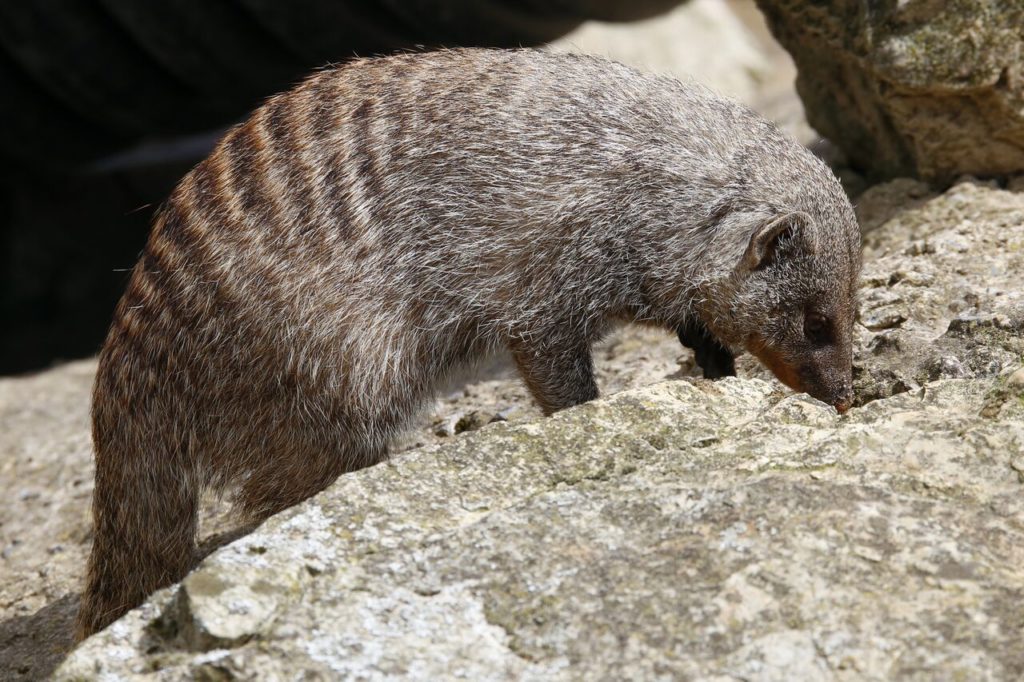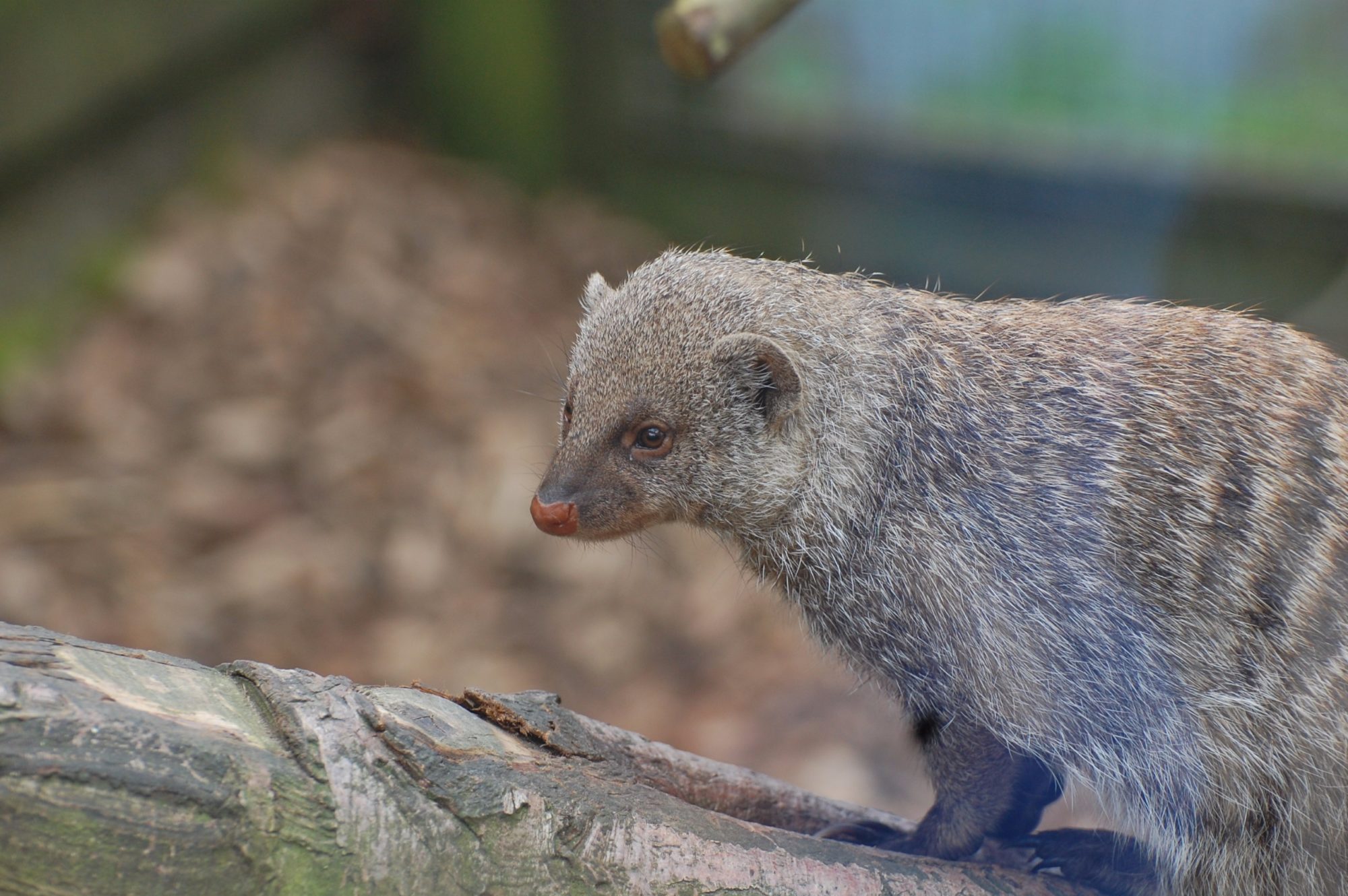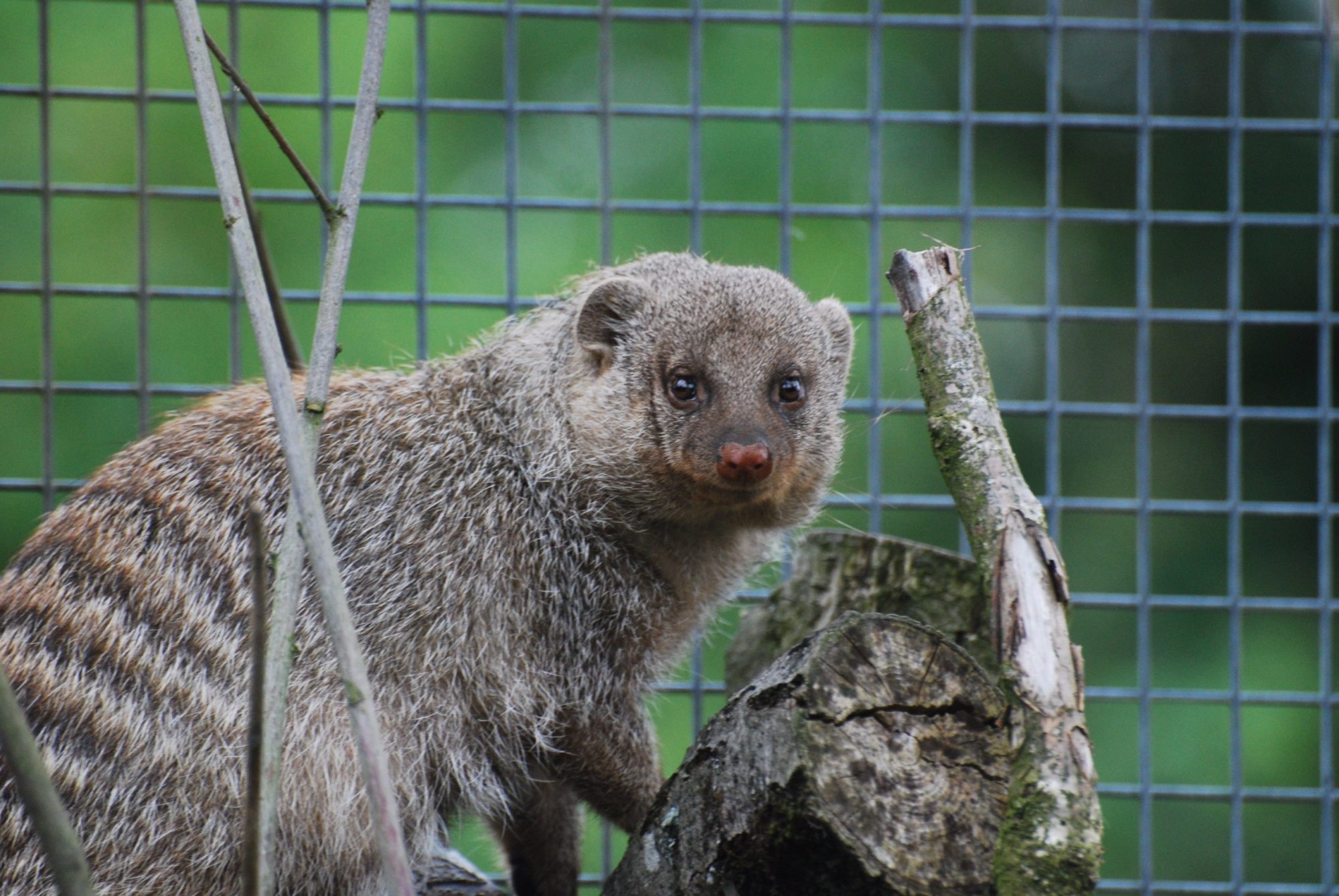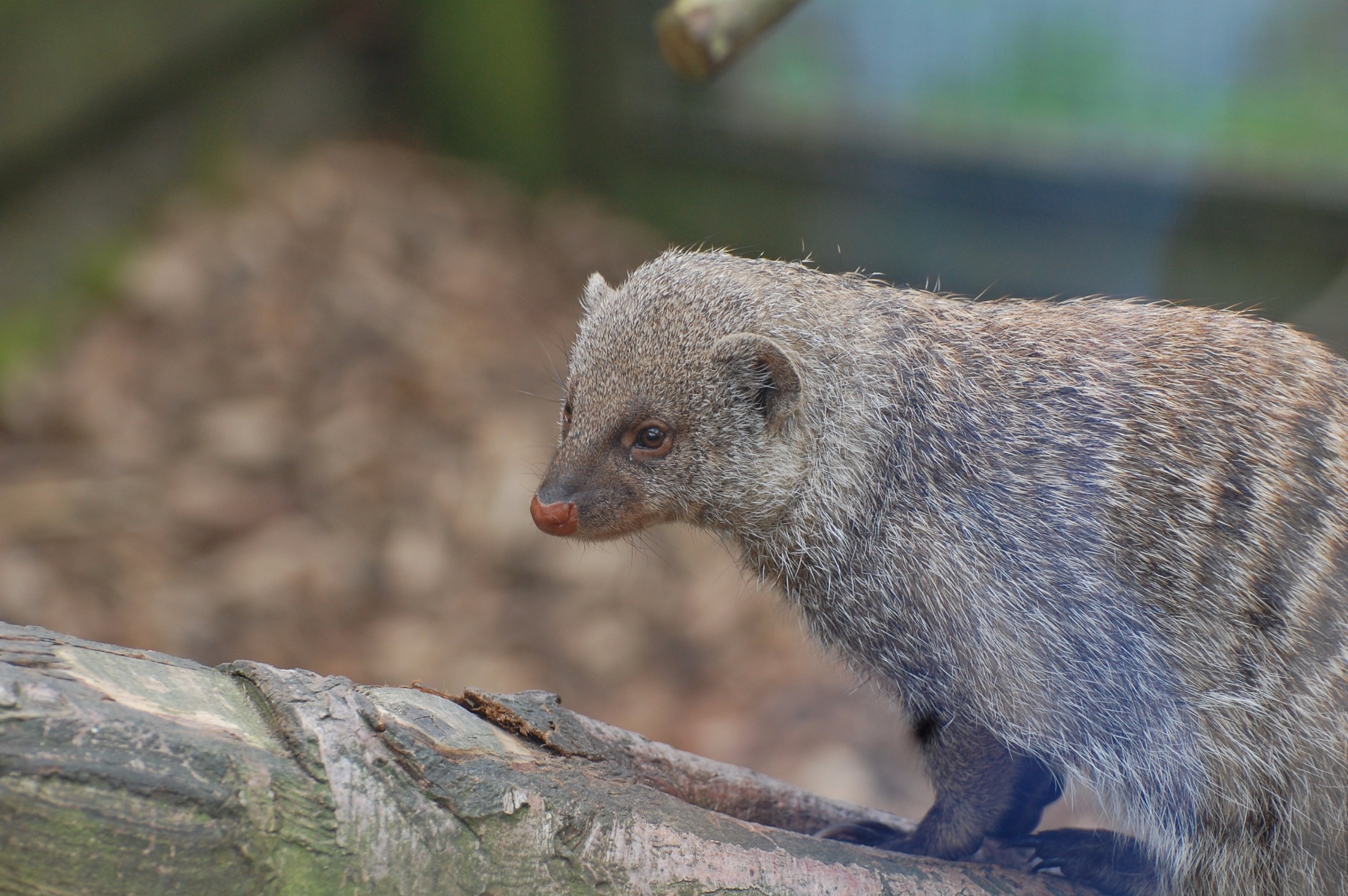

Found only in Africa, they originally come from the forests and open grasslands in central and eastern parts of the continent.
Banded mongoose get their name from the highly visible dark stripes or bands that run down the entire length of their back.
They are highly sociable and live in groups of up to 40 individuals. Living in large groups helps them in many ways. Firstly, there’s safety in numbers when attacked by predators and secondly, large numbers make it easier to collect more food.
A banded mongoose’s ideal home is an old, disused termite mound. The mongoose prefers this as it has many entrances and exits, therefore they never feel trapped in and have plenty of air holes.
They are quite nomadic little creatures, which means they like to move around from place to place. They never spend more than three or four days in any one place. If they can’t find shelter they form into a tight group with all their heads facing outwards.
Fun facts about the banded mongoose
Latin name
Mungos mungo
Class
Mammalia
Order
Carnivora
Family
Herpestidae
Conservation status
Least concern
Impress your friends with everything you know about the Banded mongoose!
They certainly have a varied diet. Frogs, snakes, fruit, eggs, beetles, ants, crickets, termites, centipedes, grasshoppers, caterpillars, earwigs, lizards and even small rodents are all on the menu.
They do yes, namely birds of prey, wild dogs, jackals, hyenas and snakes.
It varies. A litter of between two and six pups is usual, with the average set at four. After four weeks the pups are ready to look for food themselves.
They do yes, they constantly ‘chatter’ to each other throughout the day.
A group of mongoose is called a pack.
